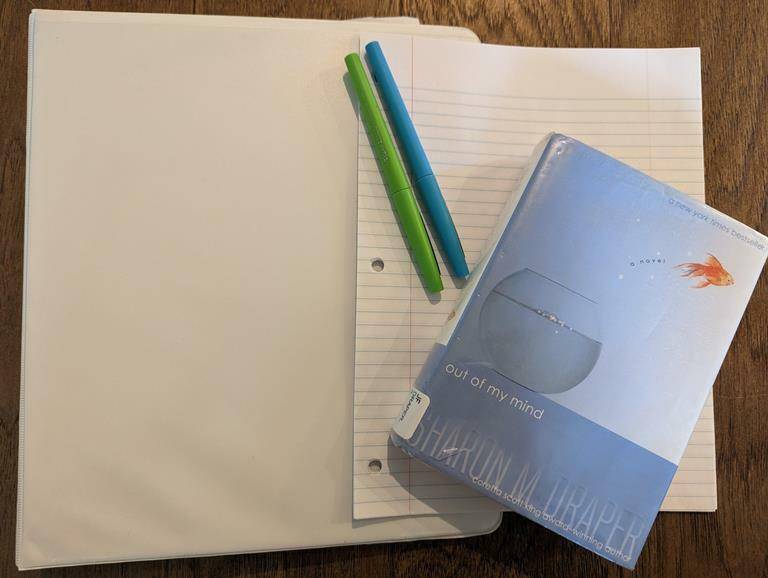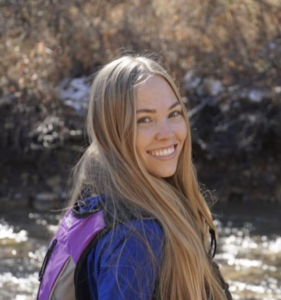Project Summary
This paper explores curriculum theory literature that leads the author to understand the importance of developing critical thinking skills among students. The author then created a unit in which 6th grade students on Individual Education Plans (IEPs) were given an opportunity to read a novel that discussed misconceptions and bias, and write a personal reflection of their own experience with this topic. As a result of this lesson, I discovered that critical thinking can be introduced early in primary education and the skills associated with it can be approached through the lens of equity literacy (Gorkski, 2018).
Project Context
Working with students with disabilities has truly impacted my understanding of equity inside the classroom setting. It has driven my desire to better teach civil discourse and critical thinking among my students in order to help them become adaptive members of society. I have witnessed how crucial it is to develop the necessary language skills to engage in dynamic social groups that inspire solutions towards equity in our society.
Embracing Change: Addressing Bias and Misconception In the Academic Setting
Background
A common phrase I catch myself saying to my students is, “leave your problems at the door, and be ready to learn”, or something to that effect. As an educator, I often find myself caught in a juxtaposition between buffering my classroom from the outside world’s influence as well as welcoming the many diverse experiences that walk through my door. The longer I am a practitioner in the field of education, the more I realize that, regardless of my efforts, the classroom is a microcosm of what is happening politically, economically, and socially in the larger world outside school. As much as we like to think students and faculty can “leave it at the door”, where “it” means biases, beliefs, and influences that hamper an effective, diverse learning environment, it is clear that we need to think of better ways to interrupt negative impacts without the naive notion that we can simply put pause to such realities. At the same time, we must do this while taking advantage of the diversity that enters our classrooms. In this paper, I explore how curriculum inside the classroom is heavily impacted by the surrounding political, economic, and social climate, and further discuss methods to build safety and trust for students to become critical thinkers and adaptive members in society.
Equal opportunity and equity do not thrive within our communities, much less our schools, so easily. Regardless of how challenging it may be to reflect on hard realities it is crucial for educators, including myself, to do so. As I have explored deeper into my classroom and curriculum experience, I am found that I am less willing to isolate my students from the outside world. I have been aided in this exploration by Gorski’s (2018) work on equity literacy. Equity literacy calls for understanding the “existence of bias and inequity”, and utilizing our knowledge to eliminate the negative impacts of that bias (Gorski, 2018, p.17). I believe that as an educator, it is my responsibility to teach my students skills to identify misconceptions, and understand their impact.
Classroom Method and Participants
Based on my new understanding I took steps in my sixth-grade IEP (self-contained) class to prepare a new lesson. I planned for my students to explore the concept of negative impacts from bias through a personal guided exploration of a time where they felt they were impacted from a bias/misconception/experience. There would first be a whole class discussion surrounding a fiction book that addresses topics of bias and inequality. The class would read the book as a whole group, and this would lead into students creating their personal connections and reflections. By the end of the unit, they will write a paragraph response that addresses their personal experience as well as what they believe to be a solution to those biases to demonstrate comprehension of the topic.
For this unit, I provided a handful of reading options for my 6th grade self-contained class to vote on to read (a self-contained class is a course in which students are taken out of the general education setting, and get support for the disabilities identified on their Individual Education Plan-IEP). In this case, my students chose to read Out of My Mind by Sharon M. Draper. In Draper’s story, a young girl who is diagnosed with cerebral palsy seeks to understand the world she interacts with (Draper, 2010). She is unable to walk or talk but is able to absorb her surroundings. The book focuses on her experiences with her disability inside the academic setting, among her peers, family members, and teachers. I felt that this book would be relatable for my students as they also have disabilities that they struggle with on a day-to-day basis.
In Practice
I would read to my students roughly 15-30 minutes every day throughout the 4 weeks of the unit. After each read aloud session, we would discuss the chapters in the book together. Some sample guiding questions included, “what shocked you or stuck with you in this chapter?”; “what would you have done in this situation…”; “how did this make you feel?”; and “does this make you think differently or remind you about…”. As we began finishing the book, I facilitated a discussion with the class regarding if they ever felt that biases and misconceptions impacted them either outside of school or inside of school as well as if they felt that they may have misjudged someone else. I then strategically placed students, based on the class discussions and my observations of students, into small groups that included a diverse set of experiences. Once students were in small groups, I introduced their written response assignments. Each student needed to independently write a paragraph (for 6th graders, about 5-8 sentences) in which they included either their own personal experience with feeling misrepresented or misjudged, or when they might have felt that they misjudged a peer. Students had to include elements of the experience (event), how that experience made them feel, what their response to the experience was, and how they would handle that experience if it were to happen again.
As students were working, I visited them in their small groups, and we discussed together what they planned to write about. We would also address ways to prevent some of these misconceptions in the future. Students also had the opportunity to come up with ideas of ways to impact their school setting to interrupt negative impacts of biases in the future. Some examples that students came up with included “student conduct- conversation posters” to place around the school regarding how to get to know someone. I had a student state, “if you don’t know, don’t assume something about someone! … Ask like a normal person!” I had another student suggest that teachers should be teaching self-advocacy more effectively so that students can personally handle misconceptions about their disabilities on their own. These conversations also brought up common themes that included students’ desire to feel welcomed, safe, and trusting in their interactions at school. The students showed enthusiasm for becoming ethically adaptive and a willingness to better their society.
What I Found
When the unit was wrapping up, I couldn’t help but realize how much I had learned from this experience. First of all, it is so important for children to be able to develop critical thinking skills as early as possible. A couple of my students, I noticed, had difficulty in being able to think of a personal moment that they could relate to in the book we read. One student stated, “I am a good person, so I don’t do that to people!”, and “I have good friends, they don’t do that to me!” (by “that,” he meant that he does not misjudge others nor do his friends misjudge him). I of course did not expect in this unit that my ten-to-eleven-year-old students would make connections to the larger political, economic, and social domains of bias/misconceptions. However, one of my goals was for students to be able to think critically about how they view others, and vice versa. In addition, how does this facet of critical thinking impact student’s perception of safety and trust within peer and adult discourse in an academic setting. I had my students who struggled with this write about what they think a misconception towards the main character in the book was, and how they would possibly address that misconception. This adjustment in the lesson stood out to me because it made me realize how much we need to help students master understanding the impacts that they have on each other, and build mastery of this skill into much larger applications of civic discourse. In addition, I realized that students can access and produce new knowledge of their own experiences. This mirrored Gorski’s (2018) understanding of students in poverty when he discussed how, “People experiencing poverty are the experts on their own experiences” (p. 24). I found this to be just as true for my 6th grade students with disabilities. Much like those in poverty, students should be seen as “partners in any effective approach to address class-based school inequities”; put simply all students should be solemnly involved in helping create solutions to make their school a safer, trustworthy space. In turn, over time this type of involvement encourages adaptedness within the larger community (Gorski, 2018, p. 24).
Conclusion
So what comes from this? It has become clear to me that our education system needs to be actively addressing civic discourse through the model of equity literacy that Gorski discusses, “as the knowledge and skills educators need to become a threat to the existence of bias and inequity in our spheres of influence” (Gorski, 2018, p. 17). In my experience with this unit and my 6th graders, part of the model for building the needed skills is adoption of the ideology of social reconstruction. Providing students with the tools to be able to effectively implement change (Schiro, 2013) is crucial element. Students will take risks to be changemakers only if teachers provide them the time and attention based on genuine care and concern. “Leave your problems at the door, and come ready to learn!” is no longer a phrase that I will embrace. Rather, “be ready to make a change!” is what I will adopt moving forward. Curriculum inside our classrooms is heavily impacted by political, economic, and social influences, and it is crucial as teachers to establish safety and trust inside our classrooms. As teachers, we must accept the diversity that enters the classroom, and be able to interrupt the negative impacts of misconceptions and biases, and seize the opportunity to welcome student voice and efforts at amelioration. It is time for teachers to welcome change through civic discourse that is intentionally practiced inside school settings.
References
Draper, S. (2010). Out of my mind. Atheneum Books for Young Readers.
Gorski, P.C. (2018). Reaching and teaching students in poverty: Strategies for erasing the opportunity gap (2nd Ed.). Teachers College Press.
Schiro, M.S. (2013). Curriculum theory: Conflicting visions and enduring concerns. Sage Publications.
To cite this work, please use the following reference:
True, S. (2023, May 23). Embracing change: Addressing bias and misconception in the academic setting. Social Publishers Foundation. https://www.socialpublishersfoundation.org/knowledge_base/embracing-change-addressing-bias-and-misconception-in-the-academic-setting/

